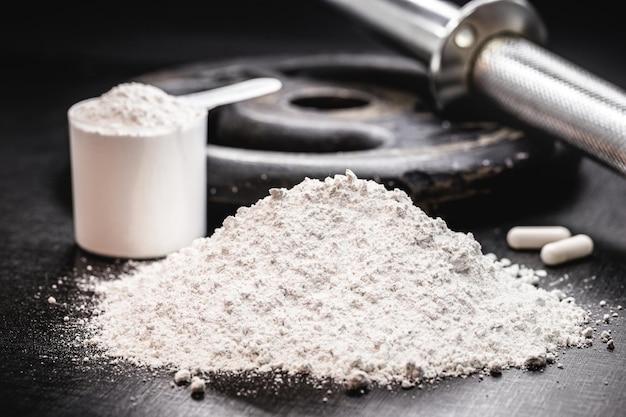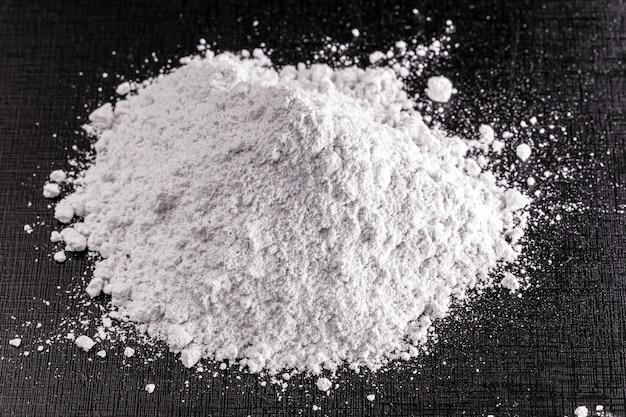Zirconium silicate is a versatile and increasingly popular material in the world of ceramics. But what exactly is it? Is it toxic? What are its uses? These questions often arise when discussing zirconium silicate, and in this blog post, we will delve into the intricacies of this unique compound.
Zirconium silicate is a silicate mineral composed of zirconium, silicon, and oxygen. With its remarkable hardness and resistance to wear and corrosion, zirconium silicate is widely used as a ceramic material. It is particularly favored in dental and medical applications due to its biocompatibility and aesthetic properties.
In this comprehensive guide, we will explore the composition of zirconium silicate, its classification in dental ceramics, and its uses in various industries. We will also address questions regarding its toxicity and safety. So, whether you’re a ceramics enthusiast or simply curious about this remarkable compound, join us on this informative journey to uncover the wonders of zirconium silicate.
What is Zirconium Silicate in Ceramics
Zirconium silicate, commonly known as zircon, is a versatile and fascinating compound that plays a vital role in the world of ceramics. Before we dive into the exciting realm of zirconium silicate, let’s start with the basics. Here’s everything you need to know about this remarkable substance.
The Lowdown on Zirconium Silicate
Zirconium silicate is a naturally occurring mineral that can be extracted from the earth’s crust. It’s commonly found in beach sands and alluvial deposits, but don’t let its humble origin fool you—it has extraordinary properties that make it a favorite in the ceramics industry.
A Force to be Reckoned With: Durability and Strength
One of the main reasons zirconium silicate is highly sought after in ceramics is its exceptional durability and strength. When added to ceramic formulations, it enhances the material’s toughness and resistance to cracking, chipping, and wear. So, next time you accidentally drop your favorite ceramic mug, there’s a good chance zirconium silicate is there to save the day!
Sparkling with Beauty: Opacity and Whiteness
In the ceramics world, appearance is everything. Zirconium silicate comes to the rescue with its incredible ability to provide opacity and whiteness to ceramic glazes and bodies. This means that when you admire that beautiful, lustrous ceramic vase sitting on your shelf, you can thank zirconium silicate for its shimmering brilliance.
From Kitchen Masterpieces to Aerospace Marvels: Versatility at Its Finest
Zirconium silicate is a true chameleon in the ceramics realm. Its versatility allows it to be used in a wide range of applications. From kitchenware to decorative tiles and even aerospace components, zirconium silicate is everywhere. It’s like the superhero of the ceramics world, saving the day and making everything from bowls to spaceship parts that much better.
Safe and Sound: Non-toxic and Heat Resistant
In the world of ceramics, safety is of utmost importance. Fortunately, zirconium silicate is non-toxic and heat resistant, making it an ideal choice for dinnerware and cooking utensils. So, rest assured that your beautiful ceramic plate won’t leach any harmful substances into your scrumptious homemade lasagna.
Zirconium silicate is truly an unsung hero in the ceramics industry. Its durability, strength, beauty, versatility, and safety make it an invaluable component of ceramic creations. So, the next time you marvel at a stunning ceramic masterpiece, remember that zirconium silicate might just be the secret ingredient that makes it truly remarkable.
FAQ: What Is Zirconium Silicate In Ceramics
Is Zircon a Silicate?
Yes, zircon is a silicate mineral. Silicates are a group of minerals that contain silicon and oxygen, and zircon is one of the most common silicates found in nature.
How Hard is Zirconia Ceramic?
Zirconia ceramic is known for its exceptional hardness. It ranks high on the Mohs scale of mineral hardness, with a rating of around 8 to 9. This hardness makes zirconia ceramic a durable and long-lasting material.
Is Zirconia a Glass Ceramic?
No, although zirconia and glass ceramics may sound similar, they are different materials. Zirconia is a ceramic material that is primarily composed of zirconium dioxide, while glass ceramics are a type of glass that has been crystallized to enhance its strength and aesthetics.
Is Zirconia Ceramic Toxic?
No, zirconia ceramic is generally considered non-toxic and safe for use in various applications, including dental restorations. It is biocompatible, meaning it is compatible with the human body and does not cause adverse reactions.
What is Special About Zirconum?
Zirconium is a unique element with several remarkable properties. It is highly resistant to corrosion, making it suitable for use in harsh environments. It also has a low neutron absorption cross-section, making it valuable in nuclear applications. Additionally, zirconium compounds are used in various industries, such as ceramics, chemicals, and jewelry.
What are the Classifications of Dental Ceramics?
Dental ceramics can be classified into different categories based on their composition. The main classifications include porcelain ceramics, glass ceramics, and oxide ceramics. Zirconia ceramic falls under the oxide ceramics category and is widely used in dental restorations due to its strength and aesthetics.
Is Zirconia and Ceramic the Same?
Yes, zirconia is a type of ceramic material. It is a highly crystalline ceramic that is primarily composed of zirconium dioxide. The unique properties of zirconia make it a preferred choice for various applications, including dental crowns, implants, and industrial components.
Is Zirconium Poisonous or Hazardous?
Zirconium is generally non-toxic and not considered hazardous to health. However, like any material, proper handling and safety precautions should be followed to avoid any potential adverse effects. It’s always best to consult safety guidelines and regulations when working with zirconium or zirconia ceramic.
How is Zirconia Ceramic Made?
Zirconia ceramic is typically made through a process called sintering. First, zirconium dioxide powder is mixed with other stabilizing compounds. The mixture is then shaped into the desired form, such as blocks or discs, and subjected to high temperatures to encourage bonding between particles, resulting in a dense and strong ceramic material.
Is Zirconia Non-Toxic?
Yes, zirconia is considered non-toxic and safe for various applications, including medical and dental uses. It is biocompatible and can be used in direct contact with body tissues without causing adverse reactions. However, as with any material, it is essential to follow proper handling and safety guidelines.
What is Ceramic Zirconium?
Ceramic zirconium refers to zirconium dioxide, also known as zirconia, in its ceramic form. Zirconia ceramic exhibits excellent mechanical properties, such as high strength and toughness, making it suitable for various applications requiring exceptional durability.
What Composition Category is Zirconia?
Zirconia falls under the category of oxide ceramics. It is primarily composed of zirconium dioxide (ZrO2) and may contain small amounts of other stabilizing oxides, such as yttria (Y2O3). These compounds help enhance the mechanical and thermal properties of zirconia ceramic.
Is Lithium Disilicate a Ceramic?
Yes, lithium disilicate is a type of ceramic material that is commonly used in restorative dentistry. It is composed of lithium disilicate glass-ceramic, which offers both strength and aesthetics. Lithium disilicate is often used for dental crowns, veneers, and other dental restorations.
Is Zirconia a Ceramic Material?
Yes, zirconia is a ceramic material that is widely used in various industries, including dentistry. It is highly valued for its exceptional mechanical properties, biocompatibility, and aesthetic qualities. Zirconia ceramics have revolutionized dental restorations, providing patients with durable and natural-looking dental prosthetics.
Are Zirconium Rings Safe?
Zirconium rings are generally considered safe for everyday wear. Zirconium is hypoallergenic and resistant to corrosion, making it suitable for jewelry. However, it’s always essential to purchase jewelry from trusted sources and ensure proper care to maintain its longevity and appearance.
What are the Uses of Zirconium?
Zirconium finds numerous applications in various industries. It is commonly used in nuclear reactors due to its low neutron absorption properties. It is also widely utilized in the production of ceramics, glass, alloys, catalysts, and even jewelry. Furthermore, zirconium compounds have uses in the production of pigments, refractory materials, and abrasives.
Which is Better: Porcelain or Zirconia Bridge?
The choice between a porcelain bridge and a zirconia bridge depends on various factors, including the individual’s specific needs and preferences. Porcelain bridges offer excellent aesthetics but may not be as strong as zirconia bridges. Zirconia bridges, on the other hand, provide exceptional strength and durability along with a natural appearance. Consulting with a dental professional can help determine which option is best for each unique case.
What is the Price of Zirconium?
The price of zirconium can vary depending on factors such as market demand, purity, and specific application requirements. As of 2023, zirconium prices range from approximately $20 to $40 per kilogram. However, it’s important to note that prices may fluctuate over time due to various economic factors.
Which Type of Silicate is Zircon?
Zircon is a silicate mineral known as zirconium silicate (ZrSiO4). It is one of the most common and oldest minerals on Earth. With its beautiful crystal structure and impressive properties, zircon has applications in jewelry, ceramics, and as a source of zirconium.
How Strong is Zirconia Ceramic?
Zirconia ceramic is renowned for its exceptional strength. Its high flexural and tensile strength make it a preferred material for dental restorations, such as crowns and bridges. Zirconia ceramic can withstand the forces of biting and chewing, providing long-lasting durability.
What is the Best Tooth Crown Material?
The choice of the best tooth crown material depends on various factors, including aesthetics, durability, and the patient’s specific needs. Zirconia ceramic crowns offer a combination of strength and aesthetics, making them a popular choice. However, other materials like porcelain, composite resin, and metal alloys may also be suitable depending on the specific case.
What are the Uses of Niobium?
Niobium is a versatile element with several applications. It is often used in the production of superalloys, which are used in high-temperature environments, such as jet engines. Niobium also finds uses in the medical field, electronics, and as an alloying element in steel production.
Is Zirconia Better than Ceramic?
Zirconia is a type of ceramic material and offers unique advantages over traditional ceramics. Its exceptional mechanical properties, such as high strength and toughness, make it superior in terms of durability. Furthermore, zirconia’s aesthetic qualities allow for natural-looking dental restorations. However, the choice between zirconia and other ceramics depends on specific requirements and preferences.
Is Zirconia a Fake Diamond?
No, zirconia is not a fake diamond. Zirconia is a synthetic material that is often used as a diamond simulant due to its similar appearance. However, it is crucial to differentiate between zirconia and natural diamond, as they have distinct chemical and physical properties.
How is Zirconium Used in Ceramics?
Zirconium is widely used in ceramics due to its ability to stabilize crystalline structures and enhance the mechanical properties of ceramic materials. In the case of zirconia ceramics, zirconium dioxide acts as the primary component, providing strength and durability to the ceramic material.
What is Zircon Made Of?
Zircon is primarily composed of zirconium silicate (ZrSiO4), which gives it its distinctive crystal structure and beautiful appearance. In addition to zirconium and silicon, zircon may also contain trace amounts of other elements such as hafnium, thorium, and uranium.
Is Zircon a Silicate or Non-Silicate?
Zircon is a silicate mineral, specifically zirconium silicate (ZrSiO4). Silicates are a large group of minerals that contain silicon and oxygen. Zircon is one of the most common and well-known silicate minerals found in nature, often prized for its aesthetic appeal.
Note: The information provided in this FAQ-style subsection is for informational purposes only and should not be considered as professional advice. Always consult with a qualified expert or professional for specific inquiries related to zirconium silicate in ceramics.

